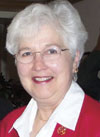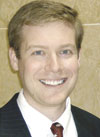 Wisconsin
Lawyer
Wisconsin
Lawyer
Vol. 81, No. 11, November
2008
Practice Tips
WisconsinEye: A New Eye on Legislative Intent
Among the multimedia coverage that
WisconsinEye provides on Wisconsin public affairs is gavel-to-gavel
coverage of all sessions of the state Assembly and Senate. All of its
program content is permanently archived, giving researchers a new tool
to discern legislative intent.
by Margaret A. Farrow &
Daniel R. Suhr
Judges, attorneys, and researchers in Wisconsin are often frustrated
by the limited range of resources available to discern the legislative
intent behind a state statute. There are few extrinsic sources of
legislative history, mainly the drafting notes and lists of accepted and
rejected amendments. A guide from the Legislative Reference Bureau
summarizes the problem:
“Many of the resources commonly associated with legislative
intent research with respect to the United States Congress have no
counterpart in the Wisconsin Legislature. There is no verbatim record of
floor debates. ... There is no transcript of committee proceedings.
Without those resources, documentation of legislative intent must rely
on other resources which are not necessarily relevant to intent, are
often not useful, and usually must be interpreted in order to be helpful
to the researcher at all.”1
This dearth of sources is particularly problematic because
Wisconsin courts traditionally place great weight on extrinsic sources
of legislative intent when interpreting an ambiguous passage from a
statute,2 though this reliance has receded
recently.3 However, the lack of sources may
start to change with the advent of WisconsinEye.
WisconsinEye is a nonprofit corporation that offers multimedia
coverage of Wisconsin’s public affairs. Basically, it is the
Wisconsin version of C-SPAN. The channel covers oral arguments before
the Wisconsin Supreme Court, press conferences by the governor and
attorney general, and interviews with important newsmakers. Of most
relevence here, it provides gavel-to-gavel coverage of all floor
sessions of the Wisconsin Assembly and Senate and records many
legislative committee hearings.4


Margaret A. Farrow is the chair of the WisconsinEye
Public Affairs Network Inc. board and former lieutenant governor of
Wisconsin. Daniel R. Suhr, Marquette 2008, is an
attorney working in Washington, D.C.
WisconsinEye is required to permanently archive all its
programming content at www.wiseye.org. Under the “Program –
Video Archives” menu, the user can find links to full coverage of
all legislative sessions since May 16, 2007. Under the link to each
recording is a brief description of what the house covered during that
day’s session. Using a resolution’s history, available on
the Legislature’s Web site,5 a
researcher can find the dates on which committee hearings were held and
votes were taken and then compare those dates to the directory of
archived footage on wiseye.org. A video archives search engine is under
construction and should be available soon.6
Although it may be time-consuming to watch for and transcribe
relevant quotes from the debate, floor statements by sponsoring
legislators can now be used in Wisconsin cases. In federal cases, these
floor statements are granted “substantial weight”7 and provide an “authoritative
guide”8 for courts.9 Given the insight provided by these
discussions, it is worthwhile for scholars researching articles,
attorneys writing briefs, and judges drafting opinions to watch and use
this source of legislative history.
In cases in which legislative history is pivotal,
WisconsinEye’s online archives could play a crucial role in
demonstrating to the court the legislators’ intent.
Endnotes
Wisconsin Lawyer
